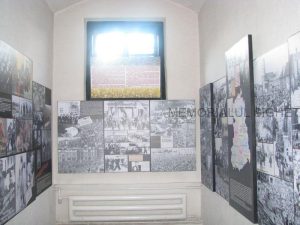 The uprising of 16-17 June 1953, in a Berlin about to be Sovietised, extended almost instantaneously to a number of other districts of the German Democratic Republic and was repressed with the same rapidity with which it had broken out.
The uprising of 16-17 June 1953, in a Berlin about to be Sovietised, extended almost instantaneously to a number of other districts of the German Democratic Republic and was repressed with the same rapidity with which it had broken out.
The thaw imposed – paradoxically by the Soviets themselves – on the Ulbricht regime, which had stubbornly clung to Stalinist dogmas even after the death of Stalin, provided as so often in the history of the dictatorships an opportunity for a yearning for freedom to break out. Less than two week after the launch of the “new course” strikes broke out, then spontaneous and simultaneous demonstrations. Realising that they had been playing with fire, it was also the Soviets who crushed the uprisings, in order to prevent any repeat in other Eastern Bloc countries.
However, the Ulbricht regime could not staunch the flow of Germans en masse to the West, and on 13 August 1961, a barbed wire fence was erected along the length of the border, in the spirit of the Berlin Wall.
Six decades after the uprising and two decades since the dismantling of the frontier, it can clearly be seen that June 1953 represented at the time the first impulse toward the reunification of Germany.
Unfortunately, this impulse was inimically repressed, in forms of greater or lesser violence, until 9 November 1989…
Room realized with the financial support of the Konrad Adenauer Foundation.









